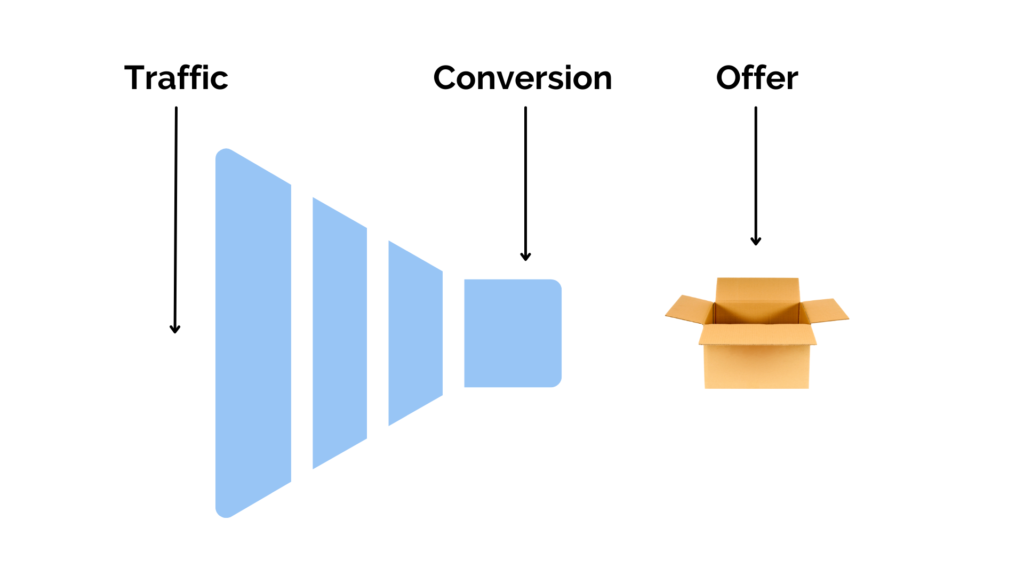Tips for optimizing your business output and making the most of your time.
Many business owners love to complain about their lack of time, but in my experience, their true issue usually isn’t about not having enough time — instead, it’s about not using their time wisely. Being busy isn’t an excuse (after all, everyone is busy these days), and if we aren’t careful, we can become trapped by spending too much time doing the things we think we should be doing rather than focusing on what we actually need to do to move the needle in the right direction.
In today’s podcast episode, I’m helping you escape the busy trap by getting clear about what’s truly important, focusing on your goals and taking imperfect action.
Tip 1: Examine What You Are Currently Doing
If you think you don’t have enough time to achieve your business goals, you’re probably wasting a lot of time doing the wrong things. For example, I used to spend hours researching and comparing systems from different email marketing service providers to determine which one was the “best” when I should have just chosen one I liked and moved forward. This issue may show up for you in a few different ways, including:
- Spending tons of time perfecting your website when you don’t actually need a website to sell your services.
- Organizing your Google Drive to the nth degree even though it has very little to do with your business’ success.
- Checking and responding to emails all day rather than setting aside a specific time during the day to respond to emails.
- Taking hours to create beautiful Excel sheets or Canva graphics when those are likely not going to help your business grow.
Making things pretty is a form of procrastination (something I’ve done many times). This often comes into play when someone is just getting started in business; they may think they need the perfect logo before they can sell, but they haven’t even taken the time to determine their brand story and create an incredible offer that people will want to buy (hint: this is CRUCIAL).
To help you put first things first, set your priorities: Prioritize the right people, the right tasks and the right places to put your energy, and let the rest go.

If you need more help getting focused, check out an older episode of my podcast: Episode 105, Beat Your Overwhelm With My Top 7 Tools, and download my FREE Online Business Systems Bible that includes the pros and cons of different systems you may be considering.
Tip 2: Apply the TCO Framework
Once you have a better idea of how you’re spending your time and can identify what’s helpful and what’s wasted, it’s time to move on to applying the TCO (Traffic, Conversion, Offer) Framework to your business. Let’s break it down:
- Traffic: This includes the people who are encountering your brand as potential clients. These could be people finding your Instagram or Facebook page, your website, your podcast — anyone coming into contact with your offers. This year, my focus is largely on driving more traffic to my podcast because it’s a great way for people to get to know me, learn about my offers and decide to work with me, which brings us to the next step…
- Conversion: This is what happens when someone buys what you’re selling. Ideally, at least some of the people who find you will convert to clients, whether it’s right away or later on down the road. As a business owner, an important part of your job is making it as easy as possible for people to understand what you’re selling and how it can change their lives, then click “purchase” — in other words, your goal is to make conversion simple and seamless.
- Offer: Unfortunately, your traffic won’t convert if your offer isn’t crystal clear. The best way to determine your offer’s clarity is to put on your “consumer” hat and take an honest look at your funnel(s) — if you were coming to your Instagram or website for the first time, is it obvious what is for sale, and would you want to purchase what you’re selling? Is the buying process a no-brainer, or is it confusing? If the answer to any of these questions is “no,” you have a problem.
A successful business needs a strong TCO Framework — so if you aren’t sure where to spend your time, I highly recommend you start right here. You need an audience (traffic), sales (conversion) and a great product (offer).

Tip 3: Take Perfection Off the Table
Perfection is an illusion, so embrace taking imperfect action in your business because it’s the only way you’ll ever launch anything — trust me. I know from experience.
My podcast is a prime example. When I started, I didn’t have the setting I have now (which you can see on YouTube); I had something else that I didn't like as much. I also had a different introduction to my earlier podcast episodes — looking back, I wish I’d used the introduction I have now, but I don’t regret my “mistakes” because they helped me get to where I am now.
Postponing action keeps you from learning and growing, and I believe that procrastination is fear of failure in disguise. Because I was willing to show up and take imperfect action, I’ve created a podcast that has helped my business grow — flaws and all! — and through experience, I’ve learned far more than I ever could have by reading, researching and otherwise delaying taking action.
Iterative learning, or optimizing, refining and improving something as you go, will help you and your business grow exponentially, and it’s only possible if you can take perfection off the table. Publish the post, send the email, launch the podcast — whatever you’ve been waiting to make “perfect” is probably ready to go out into the world NOW.
Tip 4: Track Your Data
Many business owners struggle with knowing how to spend their time and energy because they don’t know what’s going to give them the biggest return on their investment.
This is where tracking your data comes in — your cashflow, your Instagram Story views, the time it takes you to complete daily or weekly tasks, and so on — so you can make informed decisions about what’s worth your while. For example, maybe you think you have no time to grow your business but you realize you’re spending four hours a day scrolling on TikTok, or you find out that agonizing over creating the most beautiful Canva graphics actually didn’t help you attract new clients. This is valuable information that can help you make better, smarter choices going forward.
In other words: Once you start analyzing, you can start improving. However, you’re probably going to stay stuck if you bury your head in the sand.
To help you track and monitor your time, I’ve created a FREE tracking sheet that you can download right now: 100 Days of Data Protocol. Even if you’re skeptical, try it for a week — I can almost guarantee the information and clarity you’ll get will be invaluable.
Tip 5: Get in the Habit of Making Decisions and Taking Action
Lastly, understand that your growth as a business owner is dependent on your ability to make decisions and take action.
This doesn’t mean you cannot make changes as you go (remember, nothing will be ever perfect, and iterative learning is key to success), but if you never make a move, you’re going to stay exactly where you are.
Plus, results come from action — an imperfect launch is going to sell more than a nonexistent launch, just like following an imperfect workout plan is going to yield better results than not working out at all.
Many business owners waste tons of time overthinking when really, they need to make a decision and ACT on that decision. It can be so simple:
- Don’t fit well with a client? Stop working with them.
- Need to choose a launch date? Look at a calendar and decide on a date.
- Procrastinating choosing a price for a new product? Pick a price and go with it.
Results require action, and action requires decisiveness — so be bold, accept that mistakes will happen and make changes based on what you learn.
RECAP
I’ve included a quick recap of all the advice right here, so you can screenshot this article and bring these tips along as you focus on achieving more in business in less time.
Tip 1: Examine What You Are Currently Doing
Tip 2: Apply the TCO Framework
Tip 3: Take Perfection Off the Table
Tip 4: Track Your Data
Tip 5: Get in the Habit of Making Decisions and Taking Action
Watch this episode on YouTube or listen via iTunes, Spotify, or wherever you get your podcasts, and search for episode 120 of The FastForwardAmy Show.
PS: Do you want to learn how to scale your business to increase your sales even more, without having to work twice as hard? In my FREE (Dutch) Hoe Schaal Je Jouw Bedrijf webinar, I will teach you the 7 key principles to growing and scaling your business using my very own Wheel of Scalability. Learn how you can make your business work for you, not the other way around!
Register here: www.fastforwardamy.com/schaaljebedrijfwebinar




Leave a Reply